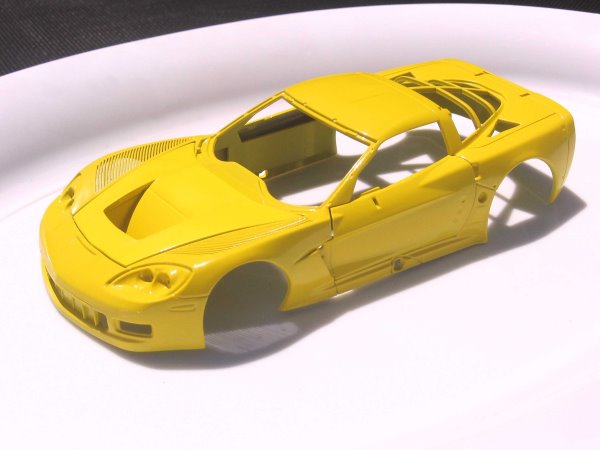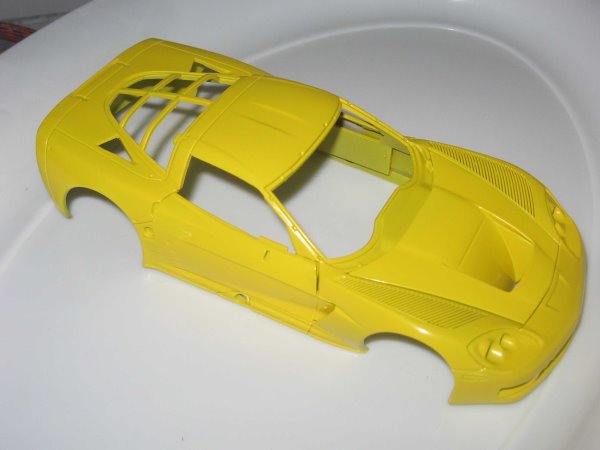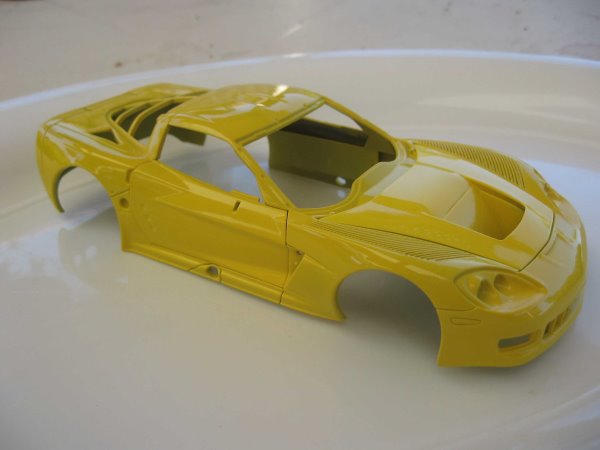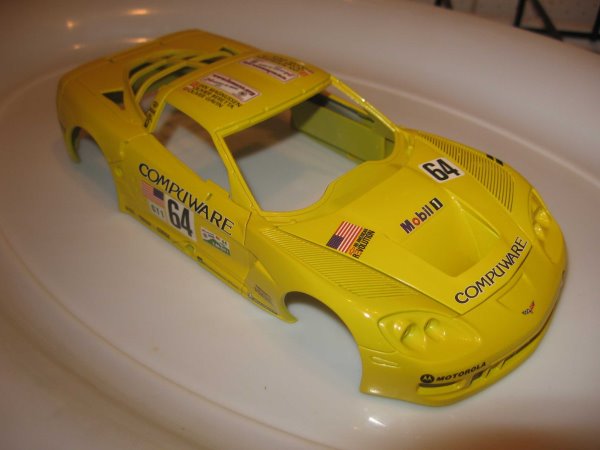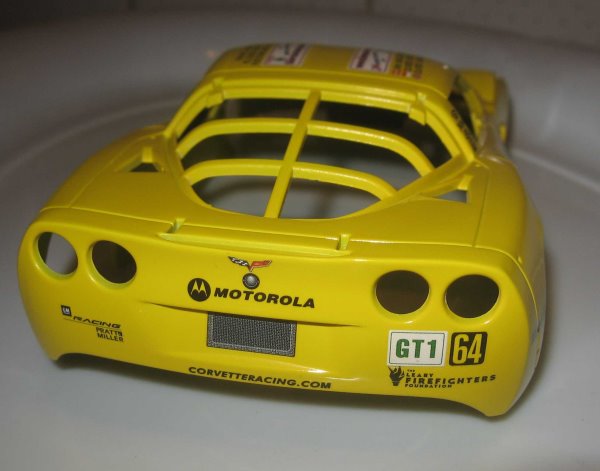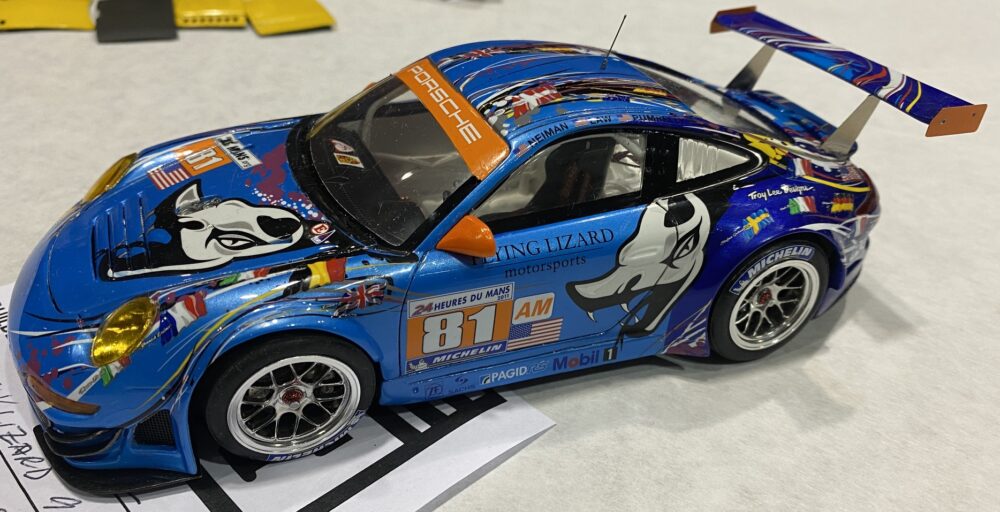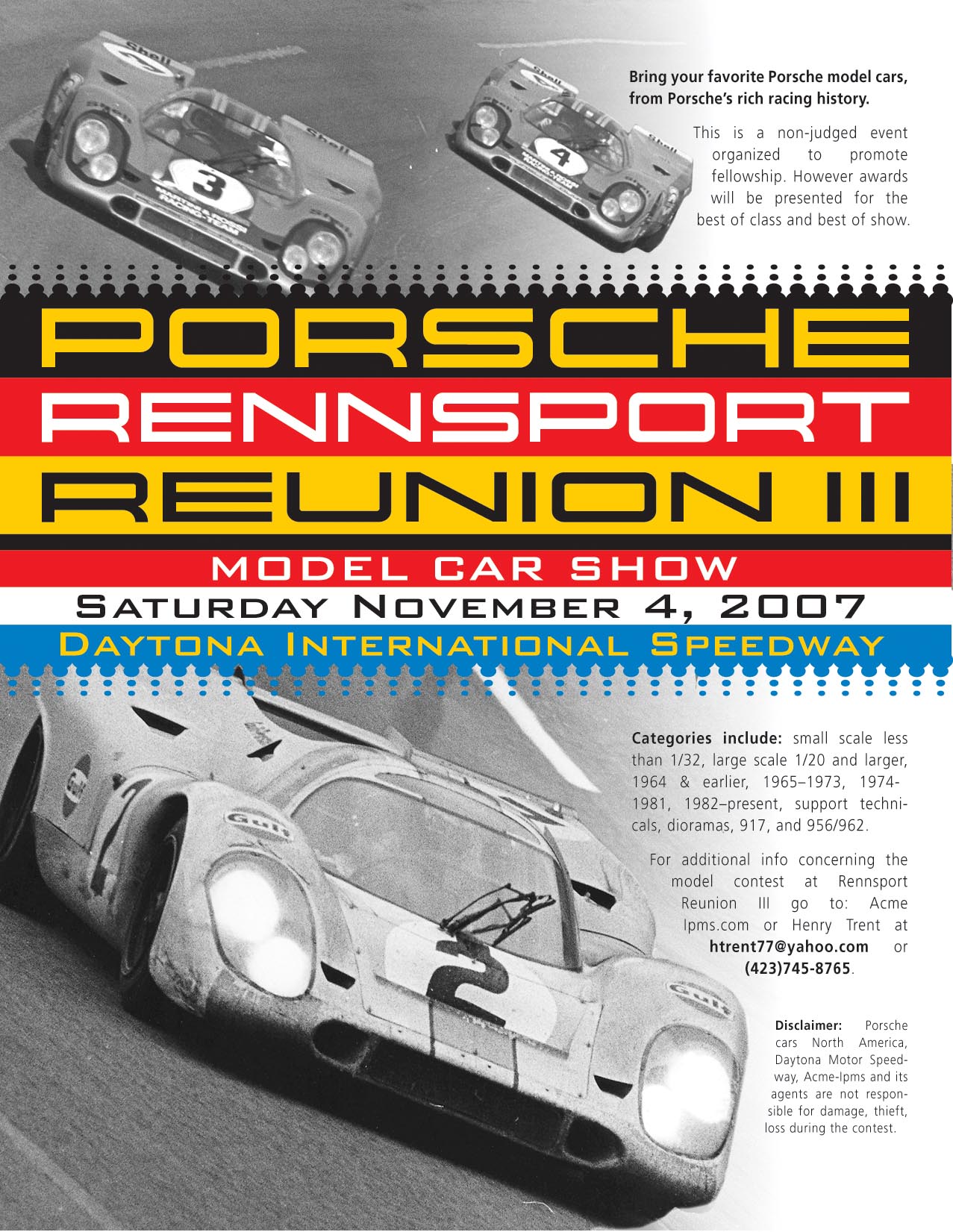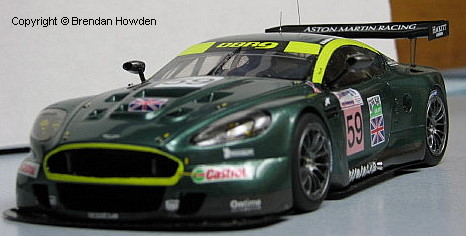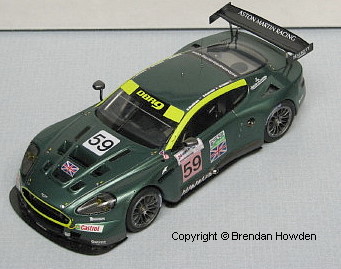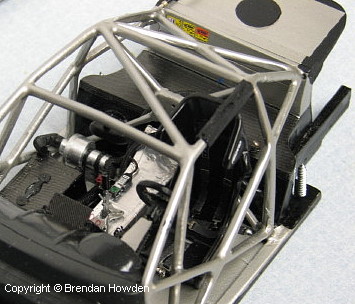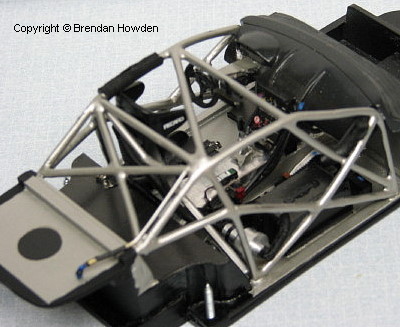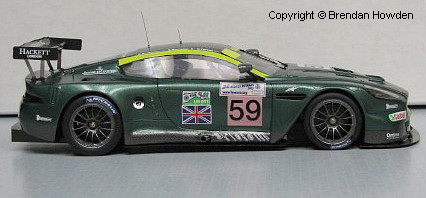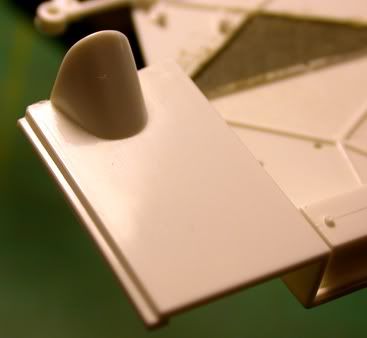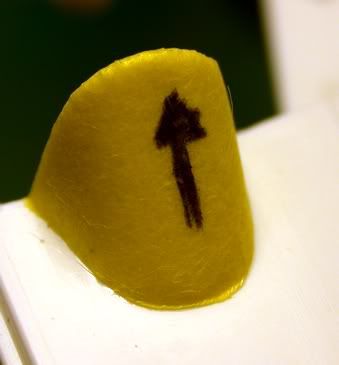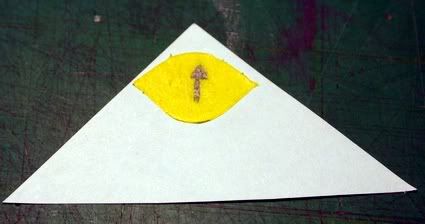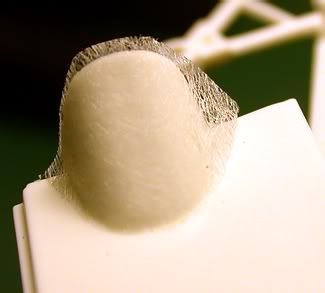
When thinking of a front-engined Ferrari racing car, many enthusiasts will immediately think of the 250 GTO. It is the classic example of the Ferrari racing car, and it dominated racing venues from 1962 to 1964. It is also the favorite example of the marque for many people. Fortunately, there are many kits and accessories available for the modeler interested in creating an accurate replica.
DETAILS
Specifications
Powertrain:
60°, 2953.21cc Alloy V-12 producing 290 HP @ 7400 RPM
73mm bore, 58.8mm stroke9.8:1 compressionCast iron cylinder liners
SOHC, 2 valves per cylinder
Six 2-barrel downdraft 38 DCN Weber carburetors
Coil ignition with two distributors5-speed gearbox attached to engine
Chassis:
Tubular frame
Independent front suspension, transverse stabilizer bar, coil springs with telescopic shock absorbers.
Rigid axle rear suspension with coil springs and telescopic shock absorbers.
Wheelbase 2.40 meters (7′ 8.5”) Track 1.35 meters (4′ 5”)Weight 1,060 kg (2,385 lb)
Miscellaneous:
4-wheel disc brakes
Fuel capacity 130 liters
History
In 1958 Ferrari introduced the 250 GT Berlinetta. With this car Ferrari was targeting wealthy customers who wanted to have a dual-purpose car, one they could drive on both road and track. These original 250 GT, also known as “Long Wheel Base” or LWB evolved into the stunning 250 GT SWB (Short Wheel Base).
The SWB was also a dual-purpose car, but there were variants whose sole purpose was racing. There were competition versions developed that offered aluminum coachwork to reduce weight along with engines that were specially built with competition in mind. The SWB plays an important part in the GTO story.
In 1961 Ferrari began development of a new car for GT racing. Based on the SWB chassis, its coachwork was lower and more aerodynamic, with a kamm tail and a version of the 250 Testarossa engine under the bonnet.
The FIA rules were clear that GT racing cars had to be based upon an existing road car. Ferrari claimed that the new car, now called the 250 GTO (Gran Turismo Omologato) was simply a development of the SWB. While this claim was disputed at the time (contemporary accounts state that the GTO was a sports prototype in GT clothing) the FIA accepted Ferrari’s claim and allowed the GTO to compete.
The new 250 GTO was completed in the winter of 1961 and presented to the press at Ferrari’s annual press conference on February 24, 1962. It made its competition debut at Sebring in the same year, driven by Olivier Gendebien and Phil Hill to 2nd overall and 1st in the GT class. The GTO proved to be nearly invincible in 1962 and 1963.
For the 1964 season, Ferrari faced new and tough competition from Ford and Carroll Shelby. Ferrari wanted to homologate the 250LM, and there were a number of 250 GTO either built or rebodied with a new “Series 2” coachwork. This was a significant change from the original cars. It had a sleeker nose and more angular roof. It was hoped that the new coachwork would bridge the gap between the GTO and the new LM.
The GTO remained effective. It won the Daytona Continental on February 16, 1964. Driven by Phil Hill and Pedro Rodriguez, the GTO was 1st overall with an average speed of 98.2 mph – this despite a blown tire. GTO’s also took 2nd and 3rd in this race. The new GTO went on to win a number of races in 1964, but it was becoming clear that an era was coming to a close. While Ferrari was able to convince the FIA that the GTO was an evolution of the SWB, selling the rear-engined 250LM as an evolution of the GTO was a much harder sale. The FIA refused to recognize the LM as a GT car, and it had to run in the much more competitive prototype class.
But the GTO had made its mark on racing history. It is widely regarded as the ultimate expression of the GT car. Even today, watching these cars run in vintage events make any racing enthusiast sit up and take notice. Nothing sounds quite like a classic Ferrari V-12 at speed.
For the modeler, there is a choice to be made. One can simply decide to do a “generic” GTO. This is the easiest course and no one would question the result. If the desire is to do a particular car, then research would rule the day. GTO’s were hand-built, very customized automobiles. They differed in the details of vents, bug shields, fog lights, emblems, etc. In the case of the Series II GTO’s, there were some interesting differences in how the car’s roof was constructed, with some being smooth and others having an integrated airfoil. In either case, if the goal is to build an example from a particular race then that car would need to be meticulously researched.
Chassis Record
| Chassis No. |
Sale
Date |
Country |
Original
Color |
LH/RH
Drive |
Notes |
| 3223 GT |
6/19/62 |
USA |
Rosso Cina |
LHD |
1st Production GTO |
| 3387 GT |
3/16/62 |
USA |
Blu Gentiana Metallic |
LHD |
First Race win, Sebring 1962 |
| 3413 GT |
4/30/62 |
Italy |
RossoCina |
LHD |
Series II conversion in 1963 |
| 3445 GT |
4/30/62 |
Italy |
Rosso Cina |
LHD |
First magazine road test, Autosprint, August, 1962 |
| 3451 GT |
4/20/62 |
Italy |
Marone w/
Bianco Roof |
LHD |
1962 Targa Florio Class winner, 4th overall |
| 3505 GT |
4/20/62 |
England |
UDT-Laystall Green |
RHD |
First RHD car. |
| 3527 GT |
5/22/62 |
Austria |
Rosso Cina |
LHD |
|
| 3589 GT |
4/20/62 |
England |
Blu Scuro |
RHD |
|
| 3607 GT |
6/6/62 |
Italy |
Rosso Cina |
LHD |
|
| 3647 GT |
6/6/62 |
England |
Rosso Cina |
RHD |
Same owner since 1967 |
| 3705 GT |
6/14/62 |
France |
Rosso Cina w/French Tricolor stripe |
LHD |
1962 LeMans, 2nd overall, 1st in Class |
| 3729 GT |
7/28/62 |
England |
Bianco |
RHD |
|
| 3757 GT |
6/14/62 |
Belgium |
Rosso Cina |
LHD |
Currently owned by Nick Mason |
| 3767 GT |
7/26/62 |
England |
Verde
(BP Green) |
RHD |
Original owner was David Piper. |
| 3769 GT |
6/13/62 |
France |
Argento metallic w/blue stripe |
LHD |
|
| 3809 GT |
7/9/62 |
Switzerland |
Rosso Cina |
LHD |
|
| 3851 GT |
9/11/62 |
France |
Grigio Metallic |
LHD |
|
| 3869 GT |
10/8/62 |
England |
Rosso Cina |
RHD |
Shown at 1962 London Motor show |
| 3909 GT |
9/10/62 |
Switzerland |
Grigio Metallic |
LHD |
World record at auction (1989) £10 million |
| 3943 GT |
10/16/62 |
France |
Rosso Cina |
LHD |
|
| 3987 GT |
10/11/62 |
USA |
Ross Cina |
LHD |
1963 Sebring Class winner, 4th overall. Mecom Racing |
| 4091 GT |
11/17/62 |
Italy |
Grigio Metallic |
LHD |
Series II conversion in 1964 |
| 4115 GT |
12/7/62 |
Germany |
Grigio Metallic |
LHD |
Only GTO sold new in Germany. |
| 4153 GT |
6/2/63 |
France |
Grigio Metallic
French tricolor stripes |
LHD |
|
| 4219 GT |
2/5/63 |
USA |
Rosso Cina |
LHD |
|
| 4293 GT |
4/22/63 |
Italy/
Belgium |
Rosso Cina |
LHD |
1963 LeMans, 2nd overall, 1st in Class |
| 4399 GT |
5/29/63 |
England |
Rosso Cina |
RHD |
Series II rebody in 1964 |
| 4491 GT |
6/07/63 |
England |
Verde (BP Green) |
RHD |
Original owner was David Piper. |
| 4675 GT |
5/23/63 |
Italy |
Rosso Cina |
LHD |
Series II Rebody in 1964 |
| 4713 GT |
6/5/63 |
USA |
Rosso Cina |
LHD |
330 LM Berlinetta style body. |
| 4757 GT |
6/5/63 |
Italy |
Rosso Cina |
LHD |
|
| 5095 GT |
9/6/63 |
Italy |
Rosso Cina |
LHD |
|
| 5111 GT |
9/6/63 |
France |
Rosso Cina |
LHD |
1963 Tour de France winner |
| 5571 GT |
2/6/64 |
USA |
Rosso Cina |
LHD |
Series II – first new series II GTO (not a rebody) Daytona Continental 1st overall 1964 |
| 5573 GT |
6/11/64 |
Italy |
Rosso Cina |
LHD |
Series II |
| 5575 GT |
5/11/64 |
Belgium/
France |
Rosso Cina |
LHD |
Series II. Last GTO produced. |
Details compiled by Mike Hanson
References:
Bluemel, Keith Ferrari 250 GTO Devon, UK 1998 Bay View Books
Fitzgerald, Warren and Merrit, Richard Ferrari: The Sports and Gran Turismo Cars Newport Beach, CA 1973 Parkhurst Publications
Casucci, Piero Enzo Ferrari: 50 Years of Motoring Verona Italy 1980 Greenwich House
Bluemel, Keith Ferrari: The Racing Cars Gloucestershire 2000 Sutton Publishing LTD
KITS
1/24 Scale
The most comprehensive list of kits and accessories available for this or any other Ferrari is provided by Alex Kustov on his amazing website, Italianhorses.net:
www.italianhorses.net
ACCESSORIES
The November update is underway. New contest announcements, model rumors, racing photos, and more coming soon.
REFERENCES
Online:
www.mototechnique.com/250GTO_p1.htm
Detailed restoration photos of SN3527GT, aka 6 GTO
forum.antzweb-ferrari.com/sujet-1487-1964-ferrari-250-gto
Race record and photos of GTO64
www.ferraridatabase.com/The_Cars/1962/1962.htm
Modern photos of all GTOs and chassis numbers.
www.barchetta.cc/All.Ferraris/ferrari.by.serial.number.summary/
Individual chassis history and race record
wspr-racing.com/chassis/250GTO.htm
Individual chassis history and race record
www.web-cars.com/gto/ferrari_index.php
GTO history and photos by chassis number
www.netbaer.net
Ferrari Kit Data Base and GTO model build diary
Compiled by Gary McNutt
REVIEWS
SOURCES
Copyright © 2006 by Kevin J. Stewart. All Rights Reserved.
